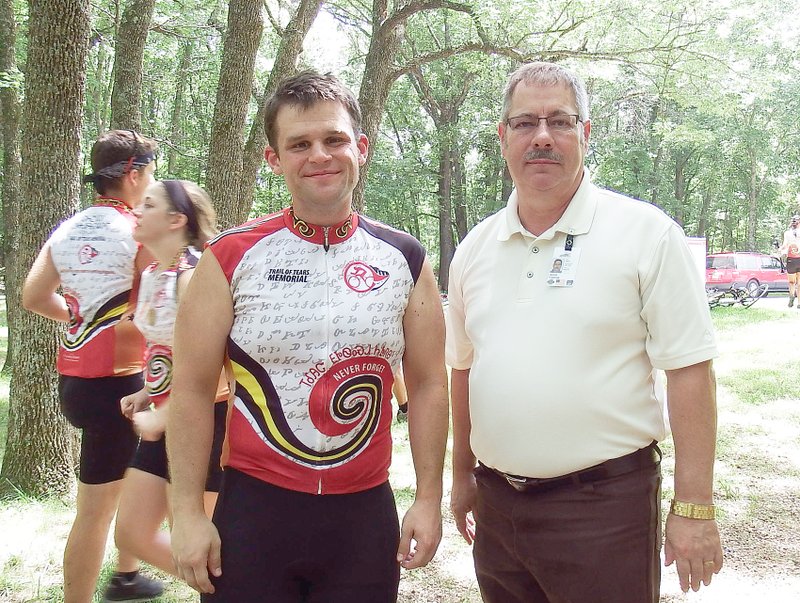Young people familiar with automobiles, cell phones and the modern conveniences of 2015 donned spandex and straddle bicycles to ride nearly 1,000 miles retracing the Cherokee Trail of Tears walked by their forebears 177 years ago. On that ride, they passed through Pea Ridge National Military Park and Benton County on their way to Tallequah, Okla.
Twelve Cherokee Indian National and seven Eastern Band of Cherokee Indians retraced the north route of the Trail of Tears in the 2015 ride. The group ranged in age from 16 to 37. The 18 riders crossed six states in 16 days cycling across Tennessee, Kentucky, Illinois, Missouri and Arkansas before arriving on the Cherokee Nation Courthouse Square in Tahlequah,Okla., June 25.
"My mother did it in '84," Sarah Holcomb said. Holcomb, 26, was one of the Cherokee bike riders on the Remember the Removal ride recently. "It was one of the greatest experiences she ever had. I decided to try it and I've been in love with it ever since."
"I always knew about the history, but you don't realize it -- the hurt, the despair -- until you're standing in that spot. We went underneath the rock where thousands of Cherokee camped in Kentucky to hide. They went to the river and froze. At that point, it really hit me, all this had happened and how bad it was," Holcomb said, referring to Mantle Rock in Kentucky where Cherokee waited for the Ohio River to thaw. She said her grandmother knows much of the history and had shared it with her.
Billy Flint, 25, had a photograph of his great-great-great-grandmother, Sally Matilla Harlan, who was only 3 years old when she was on the Trail of Tears. "She was my grandfather's great-grandmother," Flint said, adding that part of the program of being involved in the Remember the Removal ride is to trace the genealogy of each rider.
"I'm really proud of being able to say I'm a tribal member. It's one of the most important things to me," Flint said. "I recognize what was paid for by those who came before us -- a lot of sadness and a lot of sacrifice. A lot of lives were lost for those of us here. They gave everything for us. To them, being Cherokee was everything."
Along with the riders was Josh Smith, a marshal with the Cherokee Nation who was driving with the group for the second year.
Vince Osburn, an emergency medical technician from Oaks, Okla., is also a teacher at Oaks Mission School. He joined the group as an EMT to provide first aid as needed.
"I've always heard about it ... I've heard from guys who went on it," Osburn said, explaining that he hadn't been able to go in previous years because he is a coach and usually has to work in the summer. This year, he was able to go on the ride.
"I finally was able to go. I didn't think it was going to be this strenuous on these kids. The things they do... we try to realize how painful it was walking, not riding bicycles," he said, adding that realizing that the groups of Cherokees who made the first trek walked in winter, faced snakes, hills and various challenges in the terrain. "I've heard them talking about it. They know the history. My heart goes out to them, they went through a lot."
Todd Crow, communication director for the Cherokee Nation, said: "These kids get to pick the challenge. They're really neat, outspoken kids."
Community on 07/08/2015
